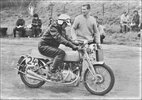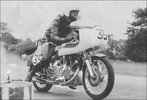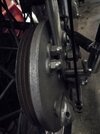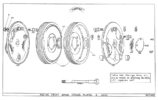Does anyone out there have drawings for the Lightning/Flash pattern brake plates? I need to machine the areas A to F so if I could find out the depth of the axle bore A and it’s height relative to E that would be appreciated. Then I would need the height of B,C,D, and F relative to whatever A is. If no drawings, does anyone have a front plate they would be willing to take measurements from?
Thanks..

Thanks..




